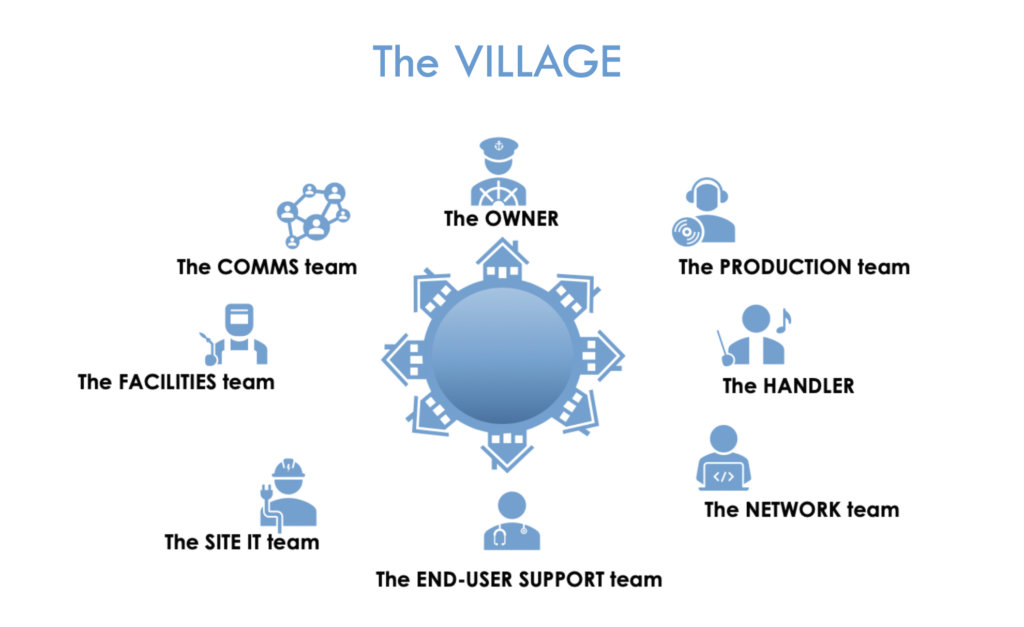Do you know the difference between planning and preparation? Although interdependent, the two are not one and the same. For example, you can plan a live event, but being prepared to host it is another story. Preparation will save your event and enable your business’ communication continuation when things outside your control happen.
These are the Live Event planning best practices you need to know to guarantee a successful live event in Microsoft Teams.
Event Qualification
Before diving head-first into planning a Microsoft Teams Live Event, it’s important to ask the right questions regarding the what, who, when, where and how.
The What
Defining what kind of event you’re planning and what it’s supposed to look like is the first step preparing for a Live Event. Ask:
- What style of communication does it require?
- Is it formal, like a quarterly Town Hall meeting?
- Is it an announcement of changes in retirement policies?
- Is it an emergency all-hands regarding the Coronavirus global situation?
- Is it a training/learning session?
- Or is it more casual, more like a team-style meeting than an actual webcast?
- What should go in it in terms of content and features?
- Pre-recorded videos? Slides? Desktop sharing?
The Who
Just as important as the what, is the who. You can’t have an event without presenters and attendees.
- Who are the speakers and where are they based or, where are they joining from?
- Who are the attendees invited to this event and how many are they?
- Are they spread globally, single continent, single country?
The When
Establishing an event timeline is critical to ensuring its success. In addition to setting a date, consider:
- What is the preparation complexity?
- Which resources are involved and what is their availability?
- What is the budget availability and impact?
Remember, short timelines mean event planning is compressed into smaller window, which may result in higher risk. When possible, build in buffers to give yourself adequate time to prepare.
The Where
Where your Live Event is held, plays a significant role in how you choose to broadcast it. Is it:
- On corporate grounds, benefiting from the corporate infrastructure?
- External, in a convention center or hotel?
- Do you have remote speakers and if so, where are they connecting from and how?
How you answer these questions will help determine what sort of support is needed to supplement your Teams Live Event.
The How
The how is shaped by the answers to all the previous questions and will enable you to assess several aspects regarding event preparation. For example:
- Will you be using QuickStart or Encoder?
- What resources are necessary to manage the event?
- Can it be managed by a small internal team, or do you need to bring in a third-party vendor to help with planning and execution?
If answering all these questions seems daunting, remember, it takes a village to produce a Live Event. You’re not in this alone.
Define Roles and Responsibilities

Just like a conference or tradeshow requires a team to make it work, so does a Microsoft Teams Live Event. As the event owner, it’s your responsibility to ensure you have the right people in the right positions for it to succeed. Here’s a quick list of actions to take to drive better alignment.
- Check that event personnel have the appropriate license level or type
- Get trained on Microsoft Teams Live Events – QuickStart or Encoder
- Create and customize the actual event
- Schedule and run practice events in advance of the real deal
- Schedule prep sessions with remote speakers or dry runs
- Draft and distribute info packs for remote teams involved
- Prepare the end-user best practices
- Agree on a schedule for the Network Readiness Tests (if you have the Kollective ECDN)
- Set arrival and departure times for the resources involved on the day of the event
- Decide success criteria
- Schedule a post-event debrief
Getting everyone on the same page early, means fewer question marks down the line.
Testing & Documentation
Another essential component of preparing for a Teams Live Event is testing network readiness. It must be carried out regardless of whether you’re running a QuickStart Teams Live Event or Encoder with production crew. If using QuickStart, ensure all presenters are connected using the exact same set-up as they will on the day of the live event – same room, machine, lighting, microphone or headset etc. This will help you spot any issues or areas of improvement ahead of time.
During this time, it is also important to document any learnings; that include both mistakes and things that went well. Running live events is sometimes unpredictable and, despite all your planning and preparation, something completely unexpected might be thrown your way. Whether you use these notes for yourself or for helping a fellow communicator and event owner, the insights are invaluable.
Watch the Webinar on Demand to Learn More
Every Microsoft Teams Live Event is unique, which means the planning and preparation will vary with each. While you can develop guidelines to help guide your preparation for a Live Event, there is no set blueprint to ensure success.
To learn more about the ins and outs of Live Event planning and preparation, watch our webinar, Live Events in Microsoft Teams Made Easy.
